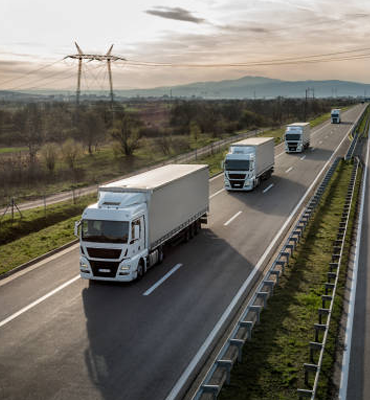Land transport and transport via pipelines
Land transport and transport via pipelines are two distinct methods of moving goods, commodities, and resources from one location to another. Each mode of transport has its advantages, disadvantages, and specific applications. Here's a comparison of land transport and transport via pipelines:
Land Transport:
-
Definition:
Land transport refers to the movement of goods and people over land using vehicles such as trucks, cars, buses, trains, and other mobile transportation methods.
-
Flexibility:
Land transport offers greater flexibility in reaching various destinations, including urban and rural areas. Roads and railways can be constructed to connect places where pipelines might not be feasible.
-
Door-to-Door Service:
Land transport provides a door-to-door service, allowing goods to be delivered directly to the final destination without the need for intermediate handling.
-
Suitable for Short to Medium Distances:
Land transport is most efficient for transporting goods over shorter to medium distances, as longer distances can be time-consuming and less cost-effective compared to other modes like sea or air transport.
-
Adaptability:
Land transport can handle a wide variety of goods, from small parcels to large and heavy cargo.
-
Environmental Impact:
Land transport, especially trucks, can have a higher environmental impact compared to pipelines due to fuel consumption and emissions.
-
Infrastructure Maintenance:
Roads and railways require regular maintenance and can be affected by factors like weather and congestion.
Transport via Pipelines:
-
Definition:
Transport via pipelines involves the transportation of liquids, gases, or other fluid-like substances through specially constructed pipes or conduits.
-
Efficiency:
Pipelines are known for their high efficiency, especially for transporting large volumes of liquids or gases over long distances with minimal energy consumption.
-
Reduced Handling :
Pipelines offer a continuous flow, reducing the need for intermediate handling and minimizing potential product loss or damage.
-
Long-Distance Transport:
Pipelines are ideal for long-distance transportation, especially when moving resources like crude oil, natural gas, or water across vast regions.
-
Lower Environmental Impact:
Pipelines generally have a lower environmental impact compared to land transport, as they produce fewer emissions during operation.
-
Specific to Liquids and Gases:
Pipelines are best suited for transporting liquids and gases, such as crude oil, refined petroleum products, natural gas, water, and chemicals.
-
Initial Investment:
Building pipelines requires significant initial investment and planning, making it less suitable for short-term or localized transportation needs.
Both land transport and transport via pipelines are essential components of the global transportation network. The choice between these modes depends on factors such as the nature of the cargo, distance, cost considerations, environmental impact, and infrastructure availability. Often, a combination of various transportation modes, including land transport and pipelines, is used to create an efficient and integrated supply chain.


